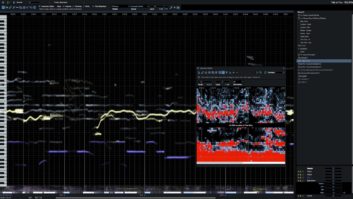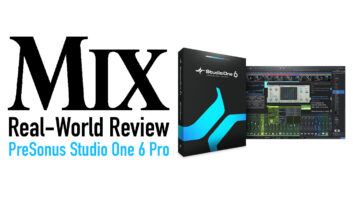I had what you might call a “revelation” during a recent mixing project. No, it wasn’t a spiritual experience, but it was eye-opening. I started experimenting with a multiband transient shaper—the one in iZotope Neutron 2, to be precise—and found it to be quite beneficial for manipulating the frequency emphasis on bass and drums, in particular, but also on other sources.
Sure, I’d used transient shapers before, but the multiband capabilities in this one brought its power to an entirely new level. The ability to manipulate the attack and sustain characteristics of a sound, in specific frequency ranges, provides you with certain types of control that you don’t get as much with an EQ or even a multiband compressor.
More often than not, transient shapers are single-band, but there are some other multiband versions on the market. Waves Trans-X is one, Melda Productions MTransient MB is another. Softube Transient Shaper offers dual-band processing, which gives you similar capabilities. (And I’m sure there are others that I’m missing.)
Read more Mix Blog Studio: The Pleasures of Going Commercial.
One of the most significant issues I had in the mix project was an upright bass that was recorded well, but lacking in high-end attack. As a result, it was too round and didn’t cut through. Turning it up louder only served to overwhelm the rest of the mix with bottom end. Although EQ was pretty useful for cutting some of the excess low end, it didn’t work well for trying to bring out the upper midrange attack.
With the Transient Shaper in Neutron, I was able to zero in on the transients in the upper midrange and boost them to make the bass cut through more. I also used it to help tame some of that low end by reducing both the attack and sometimes the sustain in the low frequencies. In conjunction with the EQ cuts I made, and some multiband compression of the low end (all of which is available in Neutron 2), I was able to help the instrument have a sharper attack and sound less tubby.
For the bass I generally used all three zones that are available in Neutron 2’s Transient Shaper, setting the crossovers at about 120 Hz and 1.3 kHz. Typically, I would leave the middle zone untouched.
I also had to deal with a kick drum that was overly bassy and needed more of the clicky part accentuated. Of course, I could have done this with an EQ, but I found that pushing the upper-mid transients worked really well. I was able to get more of the beater sound to come through. I also cut the sustain to reduce some low-end resonance on the kick. I sometimes also used similar techniques to emphasize certain parts of the snare’s attack.
Another use I found for the multiband transient shaper was to reduce the roominess of stereo room tracks. There were some songs in which I didn’t have good overhead tracks and needed to use the room tracks to provide a stereo image for the kit. However, by pushing those tracks up, the whole kit mix became overly roomy.
Again, the multiband transient shaper came to the rescue. I used it to cut the roominess by reducing the sustain. I probably could have accomplished this task with a single-band transient shaper, but I was able to tailor the sound a little more specifically by splitting the signal into several zones.
This experience has made me wonder why all transient shapers do not offer the option of multiband operation. It’s not like the one in Neutron 2 forces you to go that route. The default is single-band. But if you ever need to get more surgical, the other bands are there and can provide some significant control.







